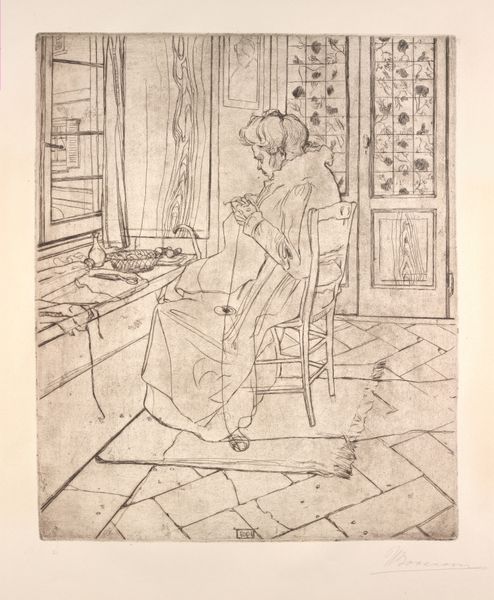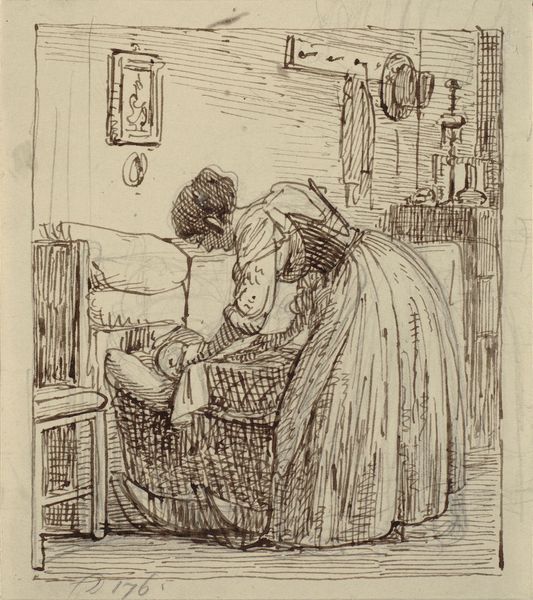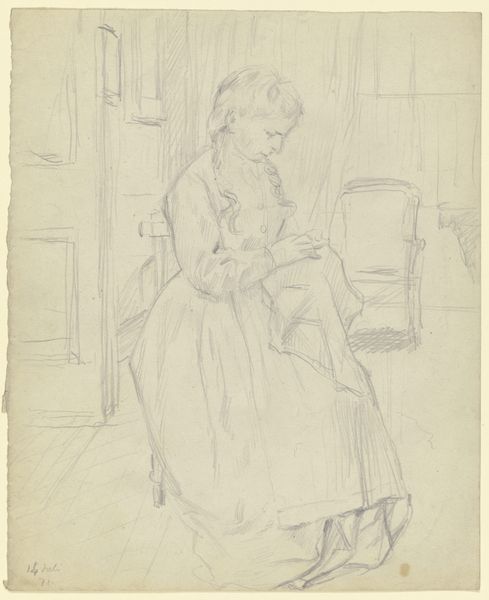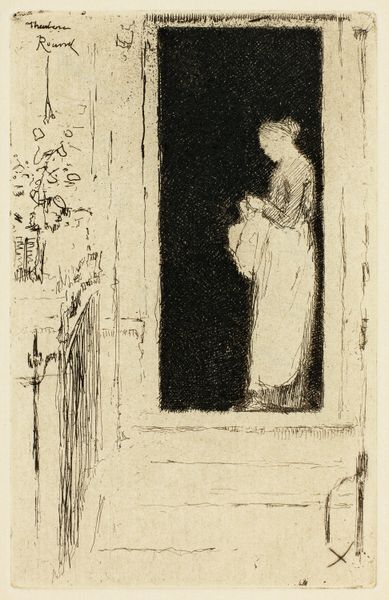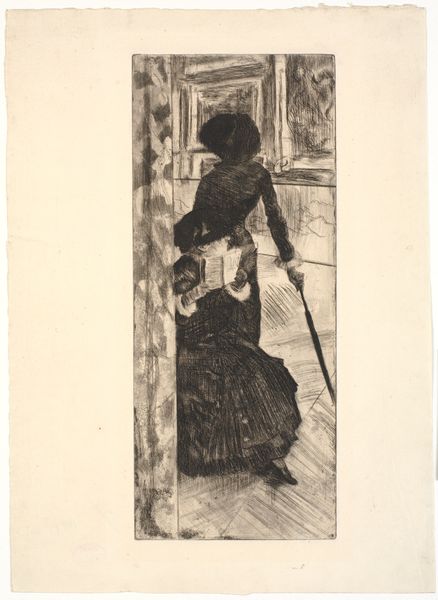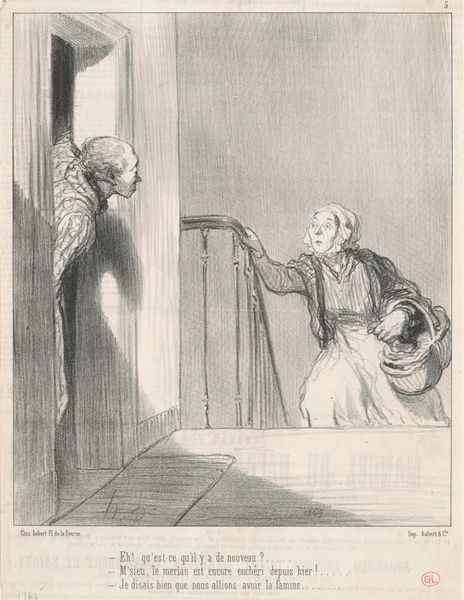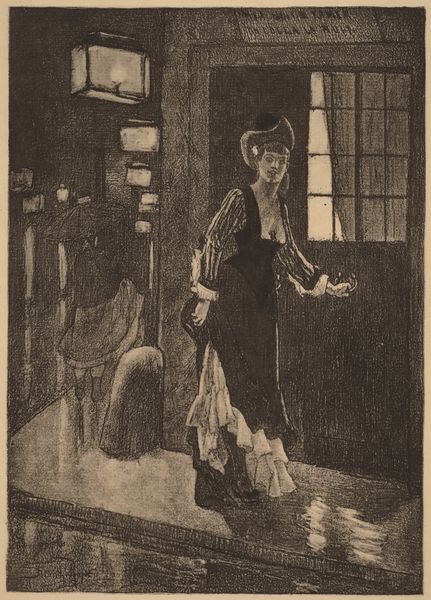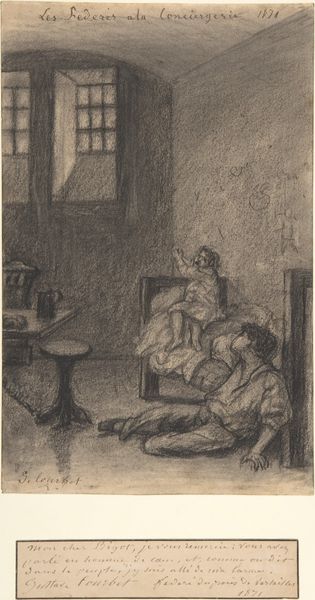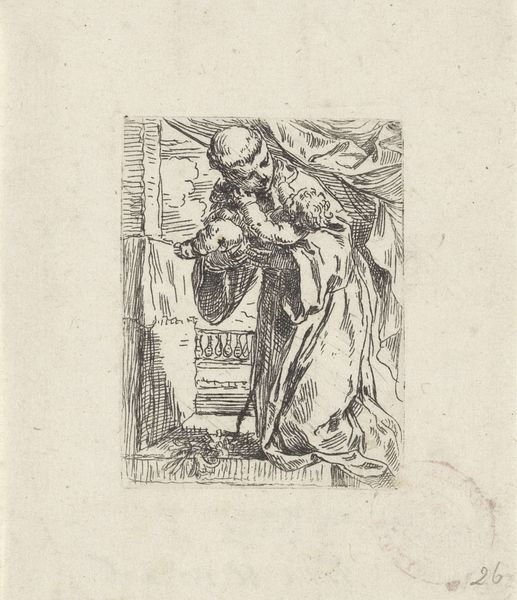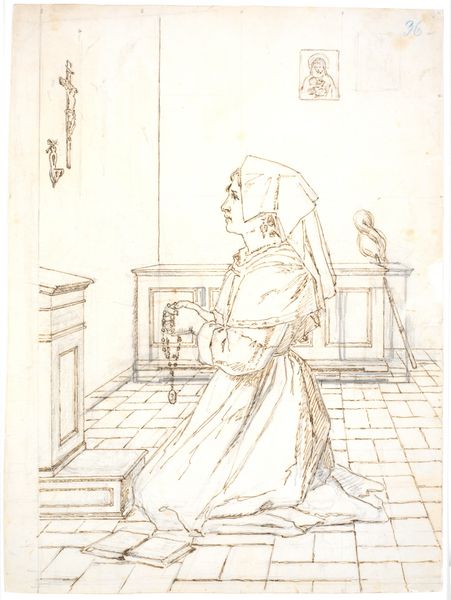![Mia madre che lavora [My Mother Working] by Umberto Boccioni](/_next/image?url=https%3A%2F%2Fd2w8kbdekdi1gv.cloudfront.net%2FeyJidWNrZXQiOiAiYXJ0ZXJhLWltYWdlcy1idWNrZXQiLCAia2V5IjogImFydHdvcmtzL2UxYTAwZDFlLTI1YWMtNDhjNS04MDZkLWE5YjZkOWMwMzQ0Ny9lMWEwMGQxZS0yNWFjLTQ4YzUtODA2ZC1hOWI2ZDljMDM0NDdfZnVsbC5qcGciLCAiZWRpdHMiOiB7InJlc2l6ZSI6IHsid2lkdGgiOiAxOTIwLCAiaGVpZ2h0IjogMTkyMCwgImZpdCI6ICJpbnNpZGUifX19&w=3840&q=75)
Dimensions: plate: 36.2 × 31 cm (14 1/4 × 12 3/16 in.) sheet: 67.3 × 48.6 cm (26 1/2 × 19 1/8 in.)
Copyright: National Gallery of Art: CC0 1.0
Curator: My first impression? Solitude, but not necessarily loneliness. It feels...contemplative. Editor: Yes, and the use of line definitely amplifies that mood. We’re looking at Umberto Boccioni’s 1907 drawing, ink and pencil on paper, titled “Mia madre che lavora,” or “My Mother Working.” There’s such intimacy in this domestic scene. Curator: Intimacy, certainly, but consider the symbolic weight. Sewing, mending, weaving—these are age-old female roles, linked to creation, care, and holding together the very fabric of society. Yet here, the woman is alone in what feels like a vast interior space. The symbolism speaks volumes about domesticity as both comfort and confinement. Editor: Precisely. And in the context of Boccioni’s burgeoning Futurism, it’s fascinating. While his later works celebrated the dynamism of the machine age, this drawing roots us firmly in the domestic sphere, offering a glimpse into the artist’s socio-political background. He’s known for championing modern life, and yet he depicts his mother engaged in such a traditional activity. Curator: The symbolism, of course, could be read as subversive as well. Look at how the light falls, highlighting her work, her presence. Is this an acknowledgment, a quiet rebellion perhaps, against the Futurists' often bombastic celebration of masculinity and progress at the expense of traditional values? There's almost a hallowed, iconic quality to the way she is rendered. Editor: I appreciate your reading of that possibility! I think his commitment to documenting the everyday elevates the quotidian. By placing her within his artistic purview, Boccioni subtly acknowledges her contribution, challenging any potential societal marginalization. What better way to enshrine her? It almost feels like a conscious decision to imbue her traditional role with artistic dignity. Curator: It certainly makes one reconsider the threads that connect even the most avant-garde movements to the traditional realities they sought to disrupt. This isn’t just a portrait; it’s a visual artifact holding complex, sometimes conflicting, cultural narratives. Editor: A powerful image that encapsulates the complexities of family, societal roles, and artistic evolution. The symbolism he explores extends beyond portraiture.
Comments
No comments
Be the first to comment and join the conversation on the ultimate creative platform.
